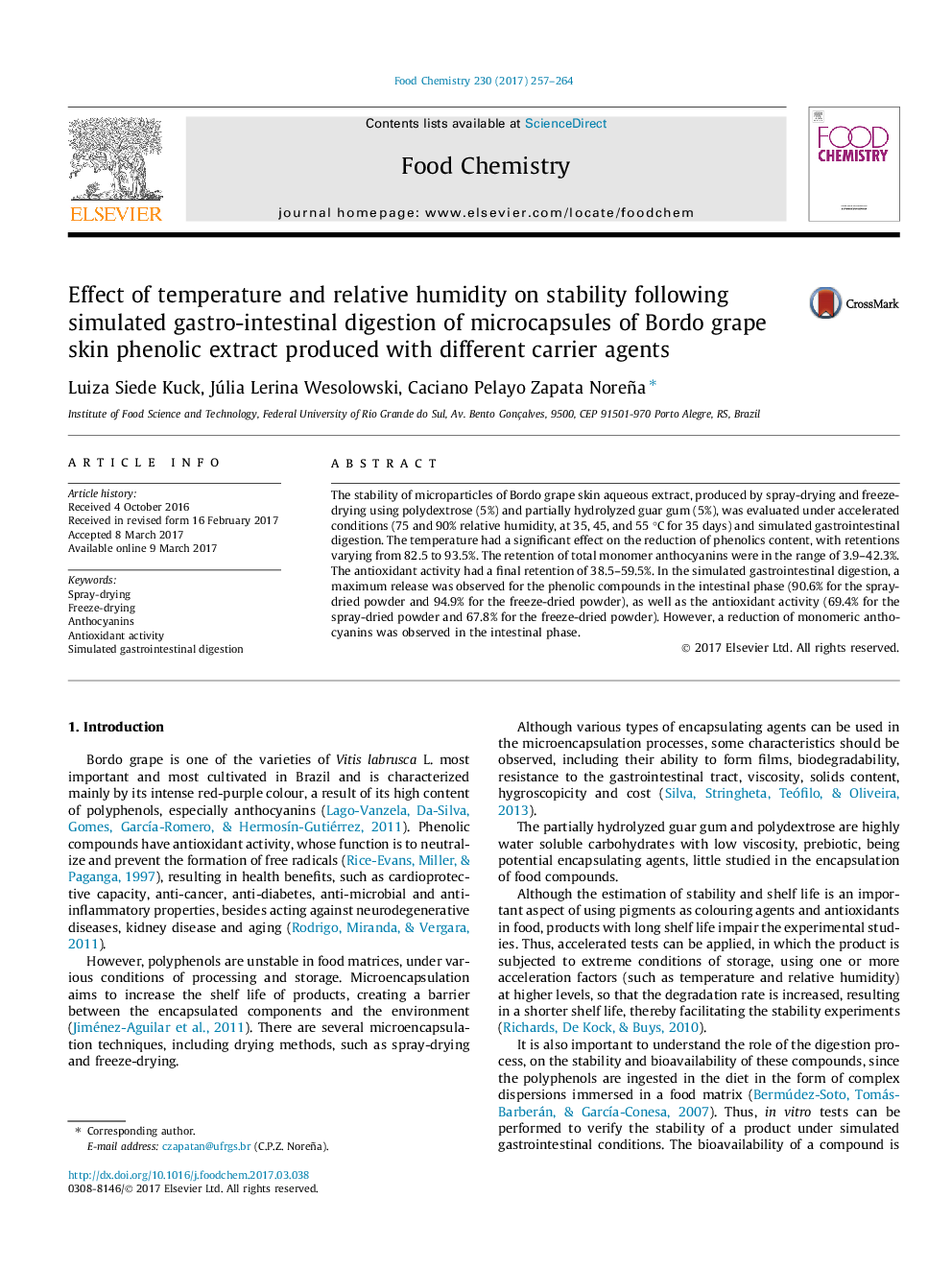| Article ID | Journal | Published Year | Pages | File Type |
|---|---|---|---|---|
| 5133203 | Food Chemistry | 2017 | 8 Pages |
â¢Polydextrose and partially hydrolyzed guar gum were used as encapsulating agents.â¢Powder of grape skin extract under accelerated storage conditions was evaluated.â¢Delivery system of phenolic compounds was simulated.â¢Simulated gastrointestinal digestion was realized.
The stability of microparticles of Bordo grape skin aqueous extract, produced by spray-drying and freeze-drying using polydextrose (5%) and partially hydrolyzed guar gum (5%), was evaluated under accelerated conditions (75 and 90% relative humidity, at 35, 45, and 55 °C for 35 days) and simulated gastrointestinal digestion. The temperature had a significant effect on the reduction of phenolics content, with retentions varying from 82.5 to 93.5%. The retention of total monomer anthocyanins were in the range of 3.9-42.3%. The antioxidant activity had a final retention of 38.5-59.5%. In the simulated gastrointestinal digestion, a maximum release was observed for the phenolic compounds in the intestinal phase (90.6% for the spray-dried powder and 94.9% for the freeze-dried powder), as well as the antioxidant activity (69.4% for the spray-dried powder and 67.8% for the freeze-dried powder). However, a reduction of monomeric anthocyanins was observed in the intestinal phase.
